water organ
Aura calculata is a water organ sculpture based on 18 acrylic glas pipes aranged in a circle. A water reservoir is placed in a central column. Two walves on the bottom of the pipes control the water to flow in and out. At the beginning the inflow valves of all pipes are opened. Water flows in and the level ballances with the level in the reservoir and the other pipes. When the first air starts to stream through the pipes all the pipes do have the same level, consequently they play the same tone.
Ca. 10 min. Watch the video also on Youtube or Vimeo.
Just the pulse is controlled externally. But the individual activity relies on the local interaction between the neighbouring pipes, which are connected by cables to exchange their states. Similar to a "wave" in a football stadium a relatively simple neighbour rule drives the pipe's activity deciding to light up and to play a tone. The activity trend is expressed in a special way: The water column rises or falls depending how active a pipe was during the last steps. This changes the pitch of the played tone, but also its timbre.
Aura calculata was realized in Winter 2016 in collaboration with the organ buildersJäger & Brommer from Waldkirch in occasion of the exhibition XX oder der Mummelsee in der Pfanne at the Städtische Galerie Offenburg.

sine tone environment
Aura calculata is a permanent sound installation for the lobby of the Lehmann-Zentrum of TU Dresden designed by Tim Otto Roth in 2015. The smallest discrete unite of this environment are the 39 "sound pixels": These electronically autonomous loudspeaker sculptures made of translucent acrylic glass exchange their status locally with their neighbour pixels by cables.
The speakers at the leftmost and rightmost position are connected behing the wall with a long cable, so the sound pixels are arranged in a cyclic order. The line of loudspeakers represents an elementary calculation process. The illumination of a sound pixel or playing a sound is based on the principle of a simple addition, similar to a human wave in a stadium. The activity of each sound pixel is a reaction to the activity of its immediate neighbours. Four different neighbourhood rules can be selected for the pulsing control sending an accelerating or decelerating meter. Given a chosen rule, exactly one neighbour being active means that the sum of all active neighbours equals one. Thus, the sound pixel plays a sound and lights up on its own in the next step. A sound pixel that has predominantly been active or off during the recent steps changes its colour and slightly its pitch upwards or downwards according to a metric scale. A continuously changing self-organizing sound tapestry is woven in the absence of a central directing instance. The sine tones recompose locally to different sounds of an organ like timbre.
More:

Aura calculata is powered by Bull GmbH.
Pixelsex
Aura calculata is a musical adaptation of so called cellular automata.
This self-organization principle is a kind of simple network revealing a complex behaviour
caused by simple local interactions in the absence of a central directing instance. These
neighbour rules function similar to a human wave in a stadium, where the actors stand up
in case one of their neighbours stood up in the previous step.
This simple form of communication in a local field of neighbours, Tim Otto Roth is exploring in
close collaboration with Prof.
Andreas Deutsch at TU Dresden, inspired Tim Otto Roth to formulate the "Pixelsex" principle:
Understanding sex as a kind of local communication and interaction the artist examines how in
a field of discrete units (Pixels) complex process can be modeled just with simple local rules.
This model is established in the science for quite some time. At the end of 1940s the
mathematician John von Neumann and the physician Stanislav Ulam developed the first concepts.
The idea inspired also Konrad Zuse – the inventor of the first functioning computer – to think
about physics taking place in a "
calculating space".


If you change the "wave" rule (left) simply, telling a soundpixel to be active if eigther the left or the right
neighbour is active you get a pattern (right).
Tim Otto Roth animates such a "calculating space" by a special analysis to reveal its dynamics by the
medium of sound. Depending on the number of sound pixels a rule set is defined how to react on the
local activity. The 39 loudspeaker sculptures in Dresden interact according to simple addition rules.
Given a chosen rule, exactly one neighbour being active means that the sum of all active neighbours
equals one. Thus, the sound pixel plays a sound and lights up on its own in the next step.
Via the control unit the visitor can switch between four different addition rules. The organ sculpture
uses a different rule set as with the reduced number of just 18 organ pipes additive rules don't show
a dynamic behaviour anymore.
The director of the Center for Art & Media (ZKM) in Karlsruhe, Prof. Peter Weibel emphasized in a
public conversation with the artist, that the spatial arrangement of the pipes and the network model are
characteristic for a music of the 21st century.
Related projects:
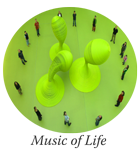
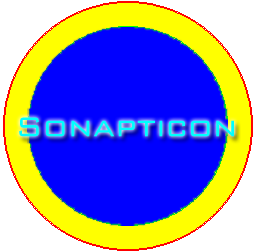
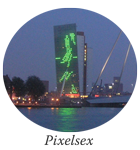
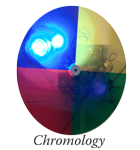
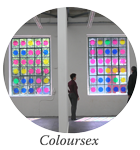

news
 25 June 2021
25 June 2021
The analysis of the water organ inspired also a peer reviewed paper: About the robustness of 1d cellular automata revising their temporal entropy by Tim Otto Roth, in Physica D: Nonlinear Phenomena Volume 425, November 2021.

7 March – 14 June 2020 ### Logische Phantasien, solo show featuring the water organ at
Kunsthalle Jesuitenkirche, Aschaffenburg, D
 13 March – 30 April 2019 ### das erste mal zum zweiten mal. 20 Jahre,
presentation of the 23 channel speaker version of
aura calculata in the context of a group show at
Marburger Kunstverein, Marburg, D
13 March – 30 April 2019 ### das erste mal zum zweiten mal. 20 Jahre,
presentation of the 23 channel speaker version of
aura calculata in the context of a group show at
Marburger Kunstverein, Marburg, D
 8 May 2017 ### aura calculata, is one of the nominated works for the STARTS - Grand prize of the
European Commission honoring Innovation in Technology, Industry and Society stimulated by the Arts
8 May 2017 ### aura calculata, is one of the nominated works for the STARTS - Grand prize of the
European Commission honoring Innovation in Technology, Industry and Society stimulated by the Arts
 Circulating Sounds – Deep Doppler meets mathematical socialism. An exhibition of Tim Otto Roth at the Goethe Institut Hanoi,
13.10.2017 - 03.11.2017
Circulating Sounds – Deep Doppler meets mathematical socialism. An exhibition of Tim Otto Roth at the Goethe Institut Hanoi,
13.10.2017 - 03.11.2017
February 2016 ### Premiere: In occasion of Tim Otto Roth's exhibition XX oder Mummelsee in der Pfanne
at the Städtische Galerie Offenburg aura calculata is realized for the first time as water organ:
 To turn on English captions please click the CC button in the player's bottom toolbar.
Ca. 10 min. You can watch the video also on Youtube.
To turn on English captions please click the CC button in the player's bottom toolbar.
Ca. 10 min. You can watch the video also on Youtube.
More about the museum exhibit running from 19 February - 29 May 2016 in Offenburg:
www.imachination.net/xx
media response
 December 2021, The Charme of the Discrete Error – When Mathematical Socialism Becomes Art, by Tim Otto Roth, Journal of Cellular Automata16.1-2, p. 153-171
December 2021, The Charme of the Discrete Error – When Mathematical Socialism Becomes Art, by Tim Otto Roth, Journal of Cellular Automata16.1-2, p. 153-171
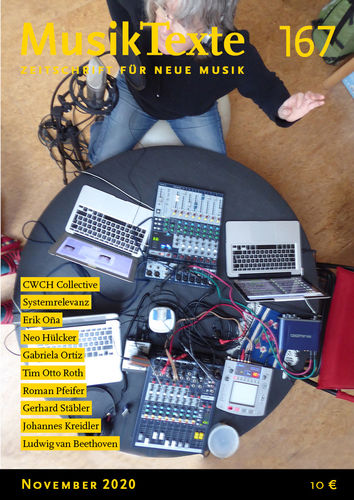 November 2020 Takte, Skalen, Daten, Algorithmen.
November 2020 Takte, Skalen, Daten, Algorithmen.
Tim Otto Roth im Gespräch, Interview by Rainer Bayreuther, MusikTexte 167
 11 November 2017, Mathematical Socialism: Tim Otto Roth Lights Up Hanoi, feature and interview by Robert Barry,
The Quietus
11 November 2017, Mathematical Socialism: Tim Otto Roth Lights Up Hanoi, feature and interview by Robert Barry,
The Quietus
 September 2017, Aura calculata, challenging the tonal scale, review by Paul Prudence,
NEURAL #57
September 2017, Aura calculata, challenging the tonal scale, review by Paul Prudence,
NEURAL #57
 October 2015 Aura Calculata – die Klang- und Lichtkunst von Tim Otto Roth siedeln an der Schnittstelle von Kunst und Wissenschaft, by Helga de la Motte-Haber,
Neue Zeitschrift für Musik 05/2015, pp. 34-37
October 2015 Aura Calculata – die Klang- und Lichtkunst von Tim Otto Roth siedeln an der Schnittstelle von Kunst und Wissenschaft, by Helga de la Motte-Haber,
Neue Zeitschrift für Musik 05/2015, pp. 34-37
June 2015 Aura calculata - am 20. Mai wurde im Foyer des Lehmann-Zentrums die permanente Klanginstallation
von Tim Otto Roth eingeweiht, Dresdner Universitätsjournal 10/2015

For further reviews on the organ installaction and press pictures please consult the press page of the
Offenburg exhibition.












